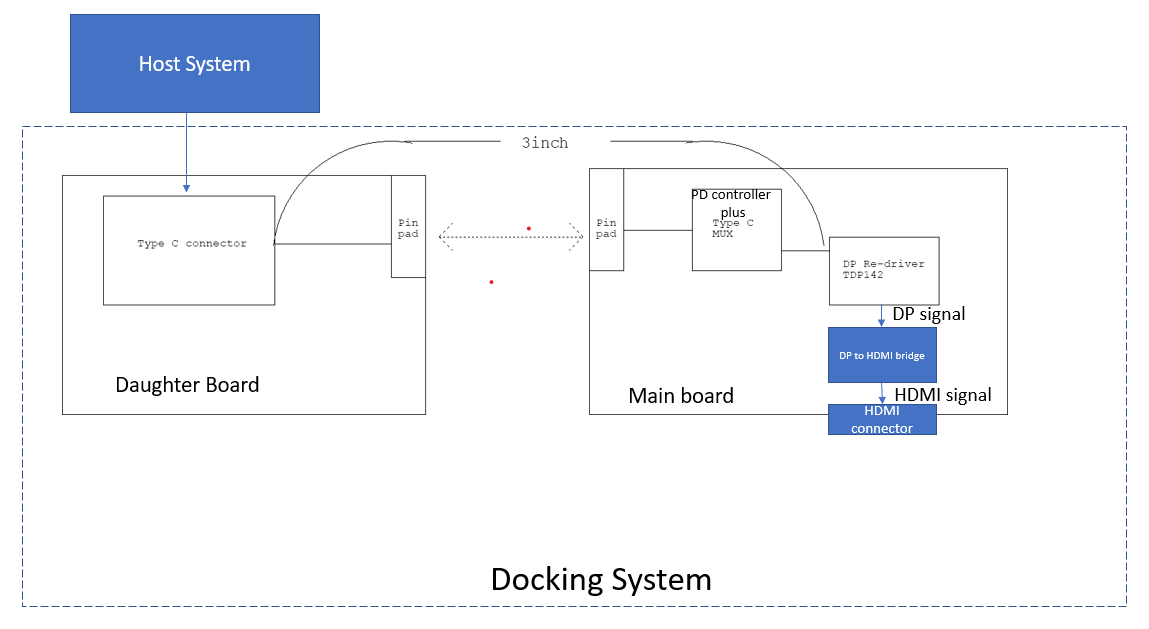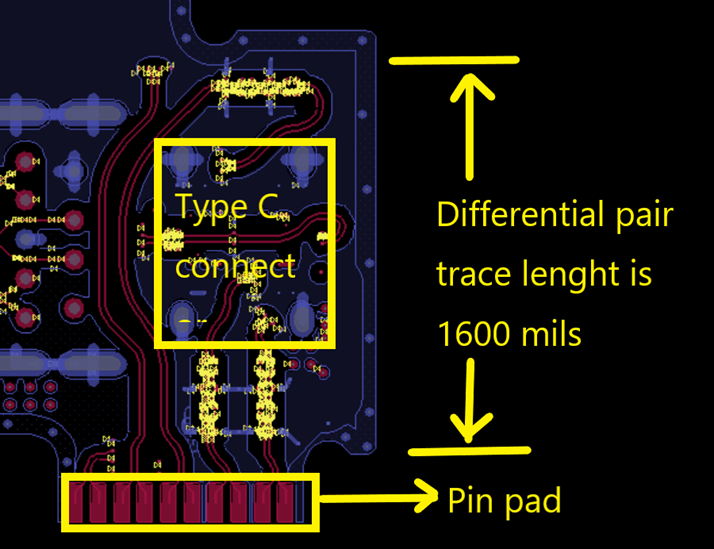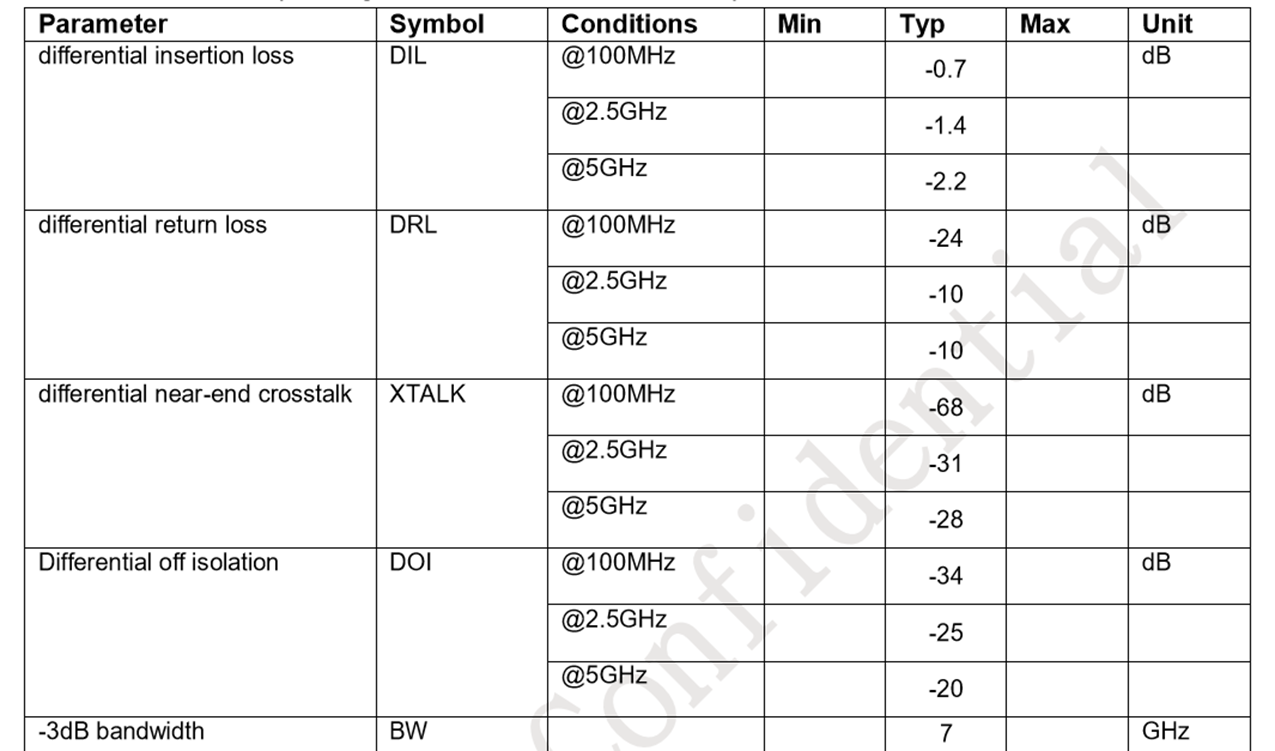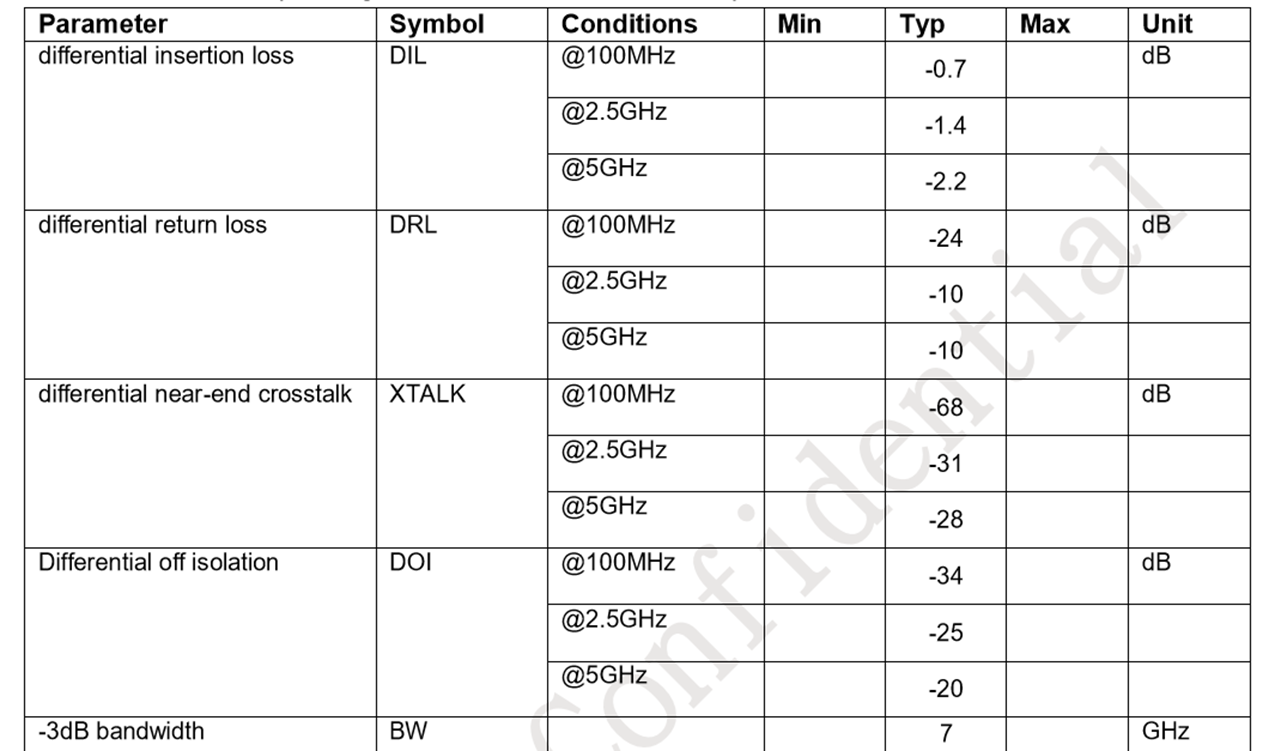Other Parts Discussed in Thread: SN65DP141, TUSB564, TUSB1064
Hi,
This is a type-c docking system with block diagram as below. THe daughter board and main board would be connected through a 10-pin pad as shown in the bottom, but the signal loss of this pad is unknown. What we know now is the trace length is totally around 3 inch from type-c connector to TDP142. I think we also need to consider the loss of type-c mux (signal loss table as below) within the PD controller. Do you see any concern for such application? What is the signal loss acceptable from pin pad ? WIll it be better to use SN65DP141?
The layout of the pin pad would look like below.
TYPE-C MUX loss
Thanks,
Antony





